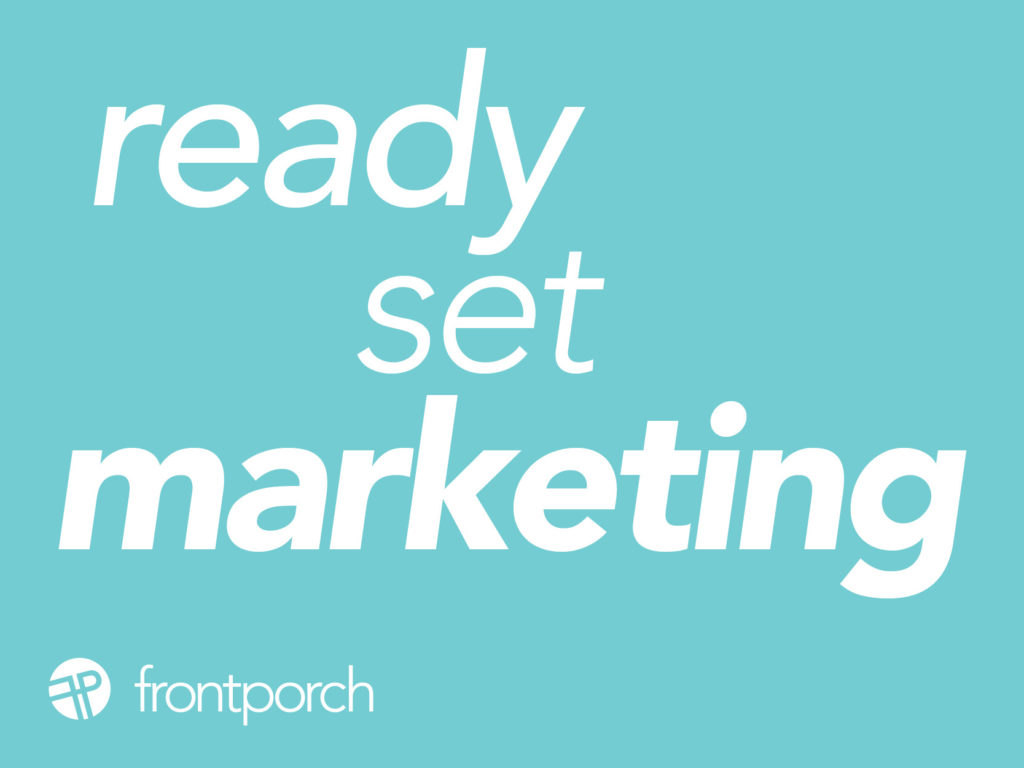
What is Content Marketing, and how do you win at doing it? How do you know what steps you need to take? Last month, we talked about doubling down on your brand – envisioning what your brand stands for, evolving your brand to meet your company’s needs today and emerging stronger in 2021.
This month, we’ll give you some pointers on taking your shiny new branding out into the world – with Content Marketing – for the win. What are the places that consumers will see your brand and interact with it? You’ll want to read thru to the end, because we’re going to tell you exactly what steps to take in this month’s extension of our Marketing 101.
Once your company has been thru a branding exercise, you’ll leave with your game plan and you’ll know what to do next. You’ll have your target nailed down, your brand’s personality defined and know exactly what category of business you can excel within. The first step once you’ve done this important branding work is your visual identity.
Ready, Set, Marketing – Your Brand’s New Logo
Commission an easy-to-use logo that works in many places. Your logo will be on your website, your social channels, your advertising and even on print work like business cards and brochures. Your logo should be simple, look good large or small. It should be easily used in black, white, and any brand colors you designate.
We’ve designed half a dozen new logo systems this past year, and while they are all quite unique to the company they’re designed for, they all have one thing in common – flexibility.
Your Brand’s New Website
If your company has a website, is it responsive, meaning does it work first and best on mobile but also on tablet and desktop devices? Modern websites need to be built with functionality for users top-of-mind.
This is called User Experience, or UX. How your customer goes thru their journey on your website should be carefully considered to make their experience as simple and rewarding as possible.
Next, your website should incorporate other important factors like Search Engine Optimization (SEO), which helps search engines like Google find your website easily. Google can then present it as a choice when consumers are searching for a business like yours. Using keywords and key phrases can help search engines determine how helpful your site is answering their questions.
Location is also a very highly weighted factor for search engines as well. If you are, for instance, a local restaurant trying to attract customers in the surrounding area, then this type of information should be of utmost importance when designing your new site.
Your Brand’s New Blog – the Starting Line of Your Content Marketing

Once you’ve built your website, keep your site content fresh. One of the most important parts of a new website is the blog. This is the place where the Content Marketing race starts. Regularly updating your blog means Google will keep revisiting your site to catalog the new helpful information you are sharing to “index” it for customers to find in search.
Blog posts are like a regular newspaper column for readers. They can subscribe to receive your news. They can make comments on your article at the end of the article. We write blog posts on topics relevant to our customers’ businesses for their website. This helps them to both build relationships with current customers as well as attract new potential customers.
Help solve people’s problems. Make this key in your blog content. Also, posting on a regular basis is equally important.
Your Brand’s Content Marketing Outreach
Think of your new site as your business’ virtual storefront. It’s your home base. Your social channels – like Facebook, Twitter, Instagram and LinkedIn – and other tactics like email marketing, Text Message Marketing are in essence, not just your advertising, but your chance to talk to your customers 1-on-1. An opportunity to develop a relationship with them. Each of these tactics has a specific use for a small business – every channel is not appropriate for every small business.
Winning in Email Marketing
Content marketing’s main ingredient is email. First, email marketing shares insider information with your best customers. After all, they opted in to receive this email newsletter from you. For instance, retail stores could offer special discounts, special not-on-the-website items, and special gifts-with-purchase to their favorite customers – which in the digital world would be their email subscribers.
For a restaurant, email marketing can announce a dining event, or a big menu change. Or a business service could announce open jobs, industry news that would affect their customers or tips and tricks to get the most out of their service.
Winning in Social Media
Social media, as a content marketing winning tactic, promotes blog posts, events, promotions, products or simply build conversation and relationships with different customers.
Our restaurant example, for instance, would want to rely heavily on Facebook, as that is the place to grow a local community – interacting with actual people who rely on their business, garnering reviews from customers, and posting events that their businesses is hosting.
But, an interior designer however, would focus on Instagram, as their clients might be all over the country, and consumers on Instagram are interested in all things beautiful. Hashtags #likethisone at the end of an Instagram post help customers find your business, much like the old card catalog at the library could help you find books on a specific topic.
Use Twitter for getting and sharing news with industry peers to establish your voice of authority. Are you an expert real estate broker? Then, share industry news in your category and give your take on any particular article. Follow reporters who work on your segment of business and interact with them when appropriate to demonstrate your expertise, making you a viable option for quotes in articles in the future.
Further, on LinkedIn, a non-profit foundation could share their quarterly goals, fundraising efforts and events, and results to a business audience of potential donors and board members.

Your Brand’s Content Marketing Win
Start with your brand. Establish a strategy for your content marketing for the win. Implement your tactics. Understand that marketing, and especially digital marketing, is a marathon with no finish line. How you run that marathon matters. Keep at it, perfecting the steps you take a little at a time. But start by taking that first step in content marketing for the win.















